For a traveller new to the region, Eastern Europe travel tips can be really helpful. After all, the eastern region of Europe is quite different from the .more popular and visited the western region.
Although a small continent, Europe has 50 countries. Each nation has its own unique history, art, culture, languages, cuisine and people. In terms of tourism, however, Western Europe witnesses more visits than Eastern Europe. Thanks to popular culture mentions. Eastern Europe has been long neglected probably due to lack of media coverage and its tumultuous history
Based on my extensive travelling in the region, I have come up with the top Eastern Europe travel tips. These will come in handy for anyone travelling or planning to travel to this part of the world.
Eastern Europe Travel Tips
While you can spend your day gazing at the spectacular renaissance art at the Louvre in Paris, exploring Venetian canals through Gondola rides and witnessing the change of guards outside the Buckingham Palace, Eastern Europe has almost as much (if not more) to offer.
The Grandeur of Vienna and Budapest, the transcendent beauty of the Julian Alps and the mesmeric coastline of Croatia, are just a few reasons to visit the Eastern side of this beautiful continent. One thing, however, should be kept in mind while visiting Eastern Europe, it might be very similar to other sides but there are certain differences politically, culturally and socially.
| 1. Create and Plan a Good Itinerary |
| 2. Check Weather Forecasts before you Head Out |
| 3. Book Everything in Advance |
| 4. Be Sure You Make Enough Space in your Luggage for Collectibles from Europe |
| 5. Be a Discerning Souvenir Collector |
| 6. Know which Countries are Not Included in the Schengen Visa |
| 7. Keep a Currency Converter App in your Phone |
| 8. Make Sure You Try the Local Cuisine (especially the desserts) |
| 9. Try Local Drinks |
| 10. Taste Unique Varieties of Cheese |
| 11. Keep Yourself Updated About the Political Scenario |
| 12. Visit again |
Create and Plan a Good Itinerary
The first thing to bear in mind while traveling to Eastern Europe is a good itinerary. To the people who think travelling is essentially a piece of cake, I would like to tell you how strongly I disagree with this statement. Road trips or a few hours’ long drives can be managed in an unplanned manner but travelling abroad, that too Europe should be carefully outlined.
In Eastern Europe, there are a lot of places to visit but it’s up to you what you want to see. A travel itinerary comes in handy here as it ensures that you can manage your time, be flexible with it and easily go from one place to another.
Your itinerary should include your preferences. You should know beforehand whether you want to prioritize a metropolitan city like Berlin or an old town where you get to wander the streets like Prague. You should know whether you would like to observe the snowy peaks of the Alps as seen from Salzburg or the sunny beaches of Croatia.
| East European Countries | Places to visit |
| Czech Republic | Prague
Plzen Olomouc Karlovy Vary Cesky Krumlov |
| Austria | Vienna
Innsbruck Hallstatt Graz |
| Slovenia | Ljubljana
Lake Bled Piran Koper Postojna |
| Croatia | Zagreb
Dubrovnik Split Hvar Pula |
| Poland | Warsaw
Krakow Poznan Wroclaw Gdañsk |
| Slovakia | Bratislava
Levoča Trnava |
| Hungary | Budapest
Heviz Eger Lake Balaton Aggtelek |
| Romania | Bucharest
Brasov Sibiu Sighisoara Mamaia |
| Serbia | Belgrade
Kopaonik Prizren Subotica |
| Bosnia and Herzegovina | Sarajevo
Blagaj |
| Bulgaria | Sofia
Plovdiv Nesebar Bansko |
| Ukraine | Kiev
Lviv Odessa Kharkiv |
| Russia | Moscow
St. Petersburg Lake Baikal |
East Europe is comprised of countries that are quite different from one another. The culture of each one is unique and inspiring. Here’s a list of countries in East Europe and the major places to visit there.
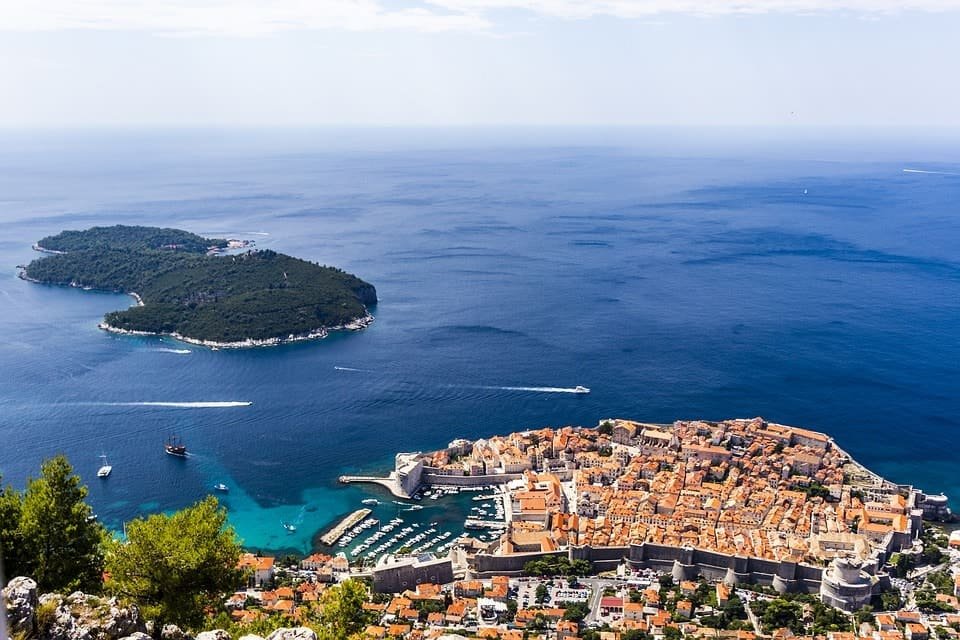
The beautiful coastal city of Dubrovnik in Croatia. Picture credits: Ced Lambert
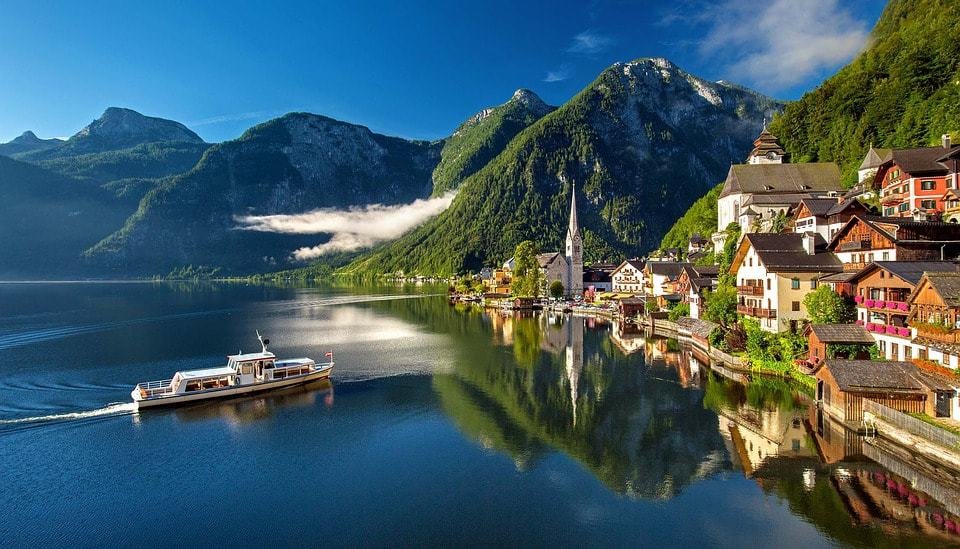
The fairy tale town of Hallstatt in Austria. Picture credits: Julius Silver
Check Weather Forecasts Before You Head Out
One of the first Eastern Europe travel tips that I’d like to share is to always check the weather forecast. You should know when to step out and what to wear depending on the temperature.
The climatic conditions in most parts of Europe can be classified as temperate continental. In Eastern Europe, however, the weather is mostly humid all year round which makes it inherently chilly.
May to August is the ideal time to visit Eastern Europe. Although July and August are peak months in terms of price hikes for accommodation and overall suitable conditions, the months of May and June have pleasant weather and witness price drops as well.
As far as rainfall is considered, the drier months are January and February. The month of March is perfect for Skiing as the snow is deep yet powdered but during this time most summer towns remain abandoned.
Book Everything in Advance
In the age of the internet, everything is just one click away. Booking flights, accommodations, reservations, and all such things can be done online from any part of the world. As a part of my Eastern Europe Travel tips, this is a really important one.
Spontaneity, although, is a great move while planning road trips as I’ve stated earlier, it is crucial to books things in advance while going to a region like Eastern Europe. Especially if you’re going during the peak seasons, most bed and breakfasts, guided tours and flight tickets are reserved.
So there’s only a slight chance you’ll be able to get your hands on anything on arrival. Therefore, for personal convenience and a relaxing trip, try to make online bookings or through agents for all things needed well in advance.
Be Sure You Make Enough Space in your Luggage for Collectibles from Europe
It’s always smart to pack essentials rather than heaps of clothes, shoes and all the things in your accessory closet. This becomes even more important if you’re on for a 2-3 week long trip. In Eastern Europe, you only need enough clothes to wear without having to wash them.
Do not over pack. Instead save that space for storing in unique collectibles from the region. They are totally worth it. Pack everyday things but do keep some safe space for the souvenir shopping that you’ll do there (I insist you do).
Be a Discerning Souvenir Collector
As mentioned above, buy collectibles in the form of souvenirs and other unique items. When you’re putting in your time, energy, effort and money to visit amazing destinations of Eastern Europe, you have got to bring along a few memorabilia.
Here’s a list of items that the following places are known for in East Europe –
| City | Known for |
| Berlin | Frau Toni’s Perfume
Berlin buddy bear Koynigliche Porzellan Vases Prussian Schnapps Berlin Belts |
| Prague | Czech Wines
Marionettes Beer cosmetics Traditional Czech Garnet Bohemian Glass Wooden Toys |
| Salzburg | Mozart/Mirabell Chocolates
The Sound Of Music music box Homemade Christmas Decorations Tracht |
| Lake Bled | Honey Brandy
Wishing Bell Beehive Panels |
| Ljubljana | Idrija Lace
Plêcnik Candleholder Prešeren Figs |
| Zagreb | Olive oil
Fountain pen Croatian Cravats Šestine Umbrella Something handmade or designed by Croatians |
| Budapest | Paprika
Tokaji Wine Hungarian Mystery Box Painted Eggs Palinka |
| Vienna | Swarovski Crystal
Viennese porcelain Austrian Beer Austrian Dirndl dress |

Buy painted eggs in Budapest. Picture credits: Rita. E

Bring home Czech Wine for friends back home. Picture credits: Adonyig
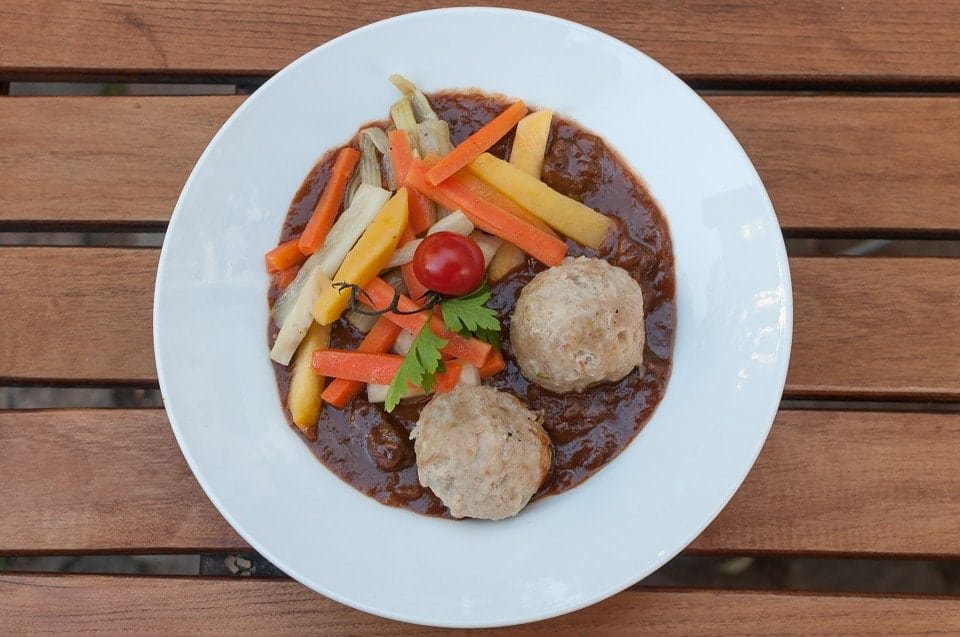
Yummilicious Mozarttaler chocolates. Picture credits: Holi Ho
Know which Countries are Not Included in the Schengen Visa
At present, the Schengen Area, which has officially abolished passport and border control at their mutual borders, comprises of 26 EU countries. People travelling to these countries require a common visa that allows them to freely travel around the jurisdiction that falls under the Schengen area.
| READ ABOUT THE MOST INTERESTING PLACES IN EUROPE HERE |
One of the most important Eastern Europe Travel Tips is to have complete knowledge of the countries that come under the Schengen Area and those that do not. For the countries that do not come under the Schengen Agreement, formalities would still include getting stamped at the border.
Here’s the full list –
| Countries Under Schengen Visa | Countries not under the Schengen Visa |
| Austria, Belgium, Czech Republic, Denmark, Estonia, Finland, France, Germany, Greece, Hungary, Italy, Latvia, Lithuania, Luxembourg, Malta, Netherlands, Poland, Portugal, Slovakia, Slovenia, Spain, Sweden- EU members that are part of Schengen | Bulgaria, Croatia, Cyprus, Romania- Legally obliged by the EU to join the Schengen |
| Iceland, Norway, Switzerland, Liechtenstein- Non-EU members that are part of Schengen | UK, Ireland- EU members that are opt-outs from Schengen |
| Monaco, Vatican City, San Marino- Micro states that are de facto members |
Keep a Currency Converter App on your Phone
Converting money is one of the most confusing tasks that you’ll have to undertake while visiting Eastern Europe.
Unlike most countries in Central and Western Europe where Euros are easily acceptable, some Eastern European countries do have their own currencies. In such places, you will find yourself in the dilemma of converting your already converted Euros into local currency.
So I’m providing the complete list of currencies used in the region below. A much safer option would be an international Visa/Debit Card which is accepted almost everywhere.
| Country | Currency |
| Austria | EUR Euro |
| Czech Republic | CZK Czech koruna |
| Croatia | HRK Croatian kuna |
| Slovenia | EUR Euro |
| Slovakia | EUR Euro |
| Hungary | HUF Hungarian forint |
| Poland | PLN Polish zloty |
| Romania | RON Romania new Leu |
| Serbia | RSD Serbian dinar |
| Bosnia and Herzegovina | BAM Convertible mark |
| Bulgaria | BGN Bulgarian lev |
| Ukraine | UAH Ukranian hryvnia |
| Russia | RUB Russian ruble |
Make Sure You Try the Local Cuisine (especially the desserts)
Eastern European food is one of the most delectable around the world. The cuisine here is every food lover’s dream. The region is known for its rich traditional cuisine which has been influenced by the natural resources as they make their way into the recipes.
To find the blend of cultures and variations of themes, be sure to try Štrukli (cheese pastry) from Croatia, Apfelstrudel (Apple Strudel) from Austria, Palačinky (Pancakes) from Czech Republic, Wiener schnitzel ( breaded and pan-fried veal cutlet) from Austria, Goulash (stew) from Czech Republic, Makowiec (poppy seed roll) from Poland, Ćevapčići (skinless sausages) from Serbia, Somlói Galuska (Trifle) from Hungary, Dobos Torte (Layered cake) from Hungary, Trdelník (Grilled dough with sugar and walnut mix) from Czech Republic, Pierogi (Dumpling) from Poland, Chicken Kiev from Ukraine, Papanasi (Fried pastry) from Romania among numerous others.
The people are as welcoming as the food and they’ll always have a seat at their table for a guest.
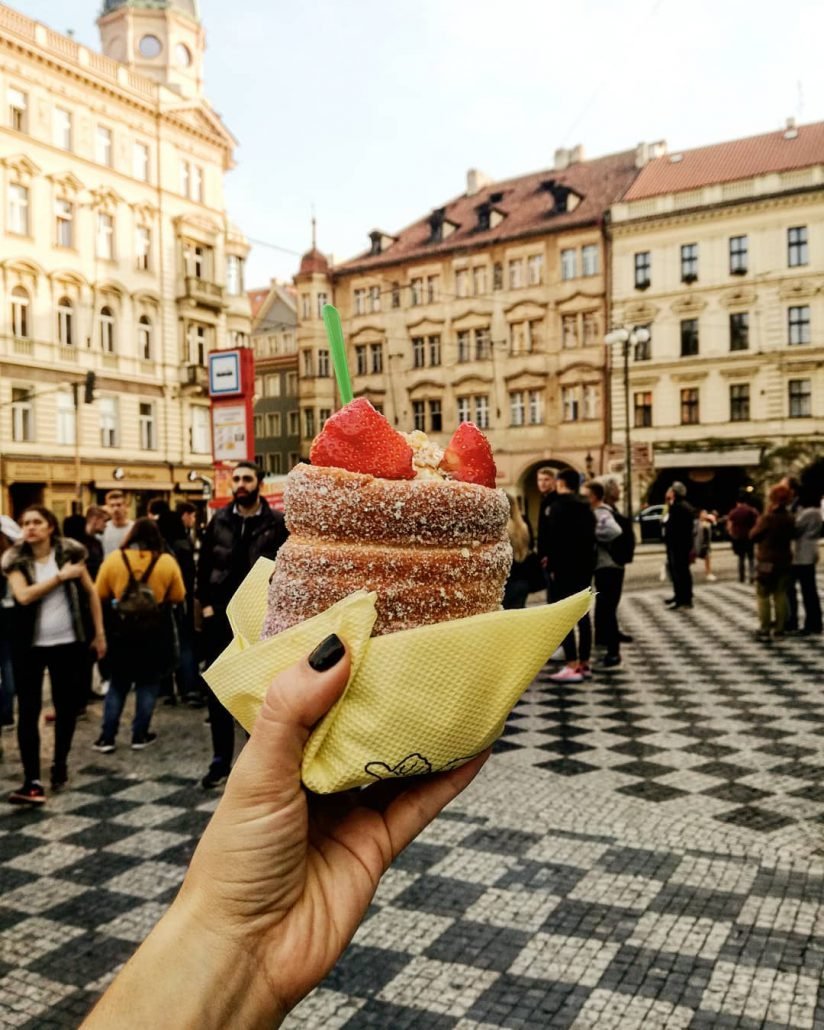
While wandering across eastern Europe, take a moment and savour the delicious Trdelnik. Picture by Julia Santilli

Delectable Palačinkies available at various countries of eastern Europe. Have them for breakfast. Picture credits: Rita. E
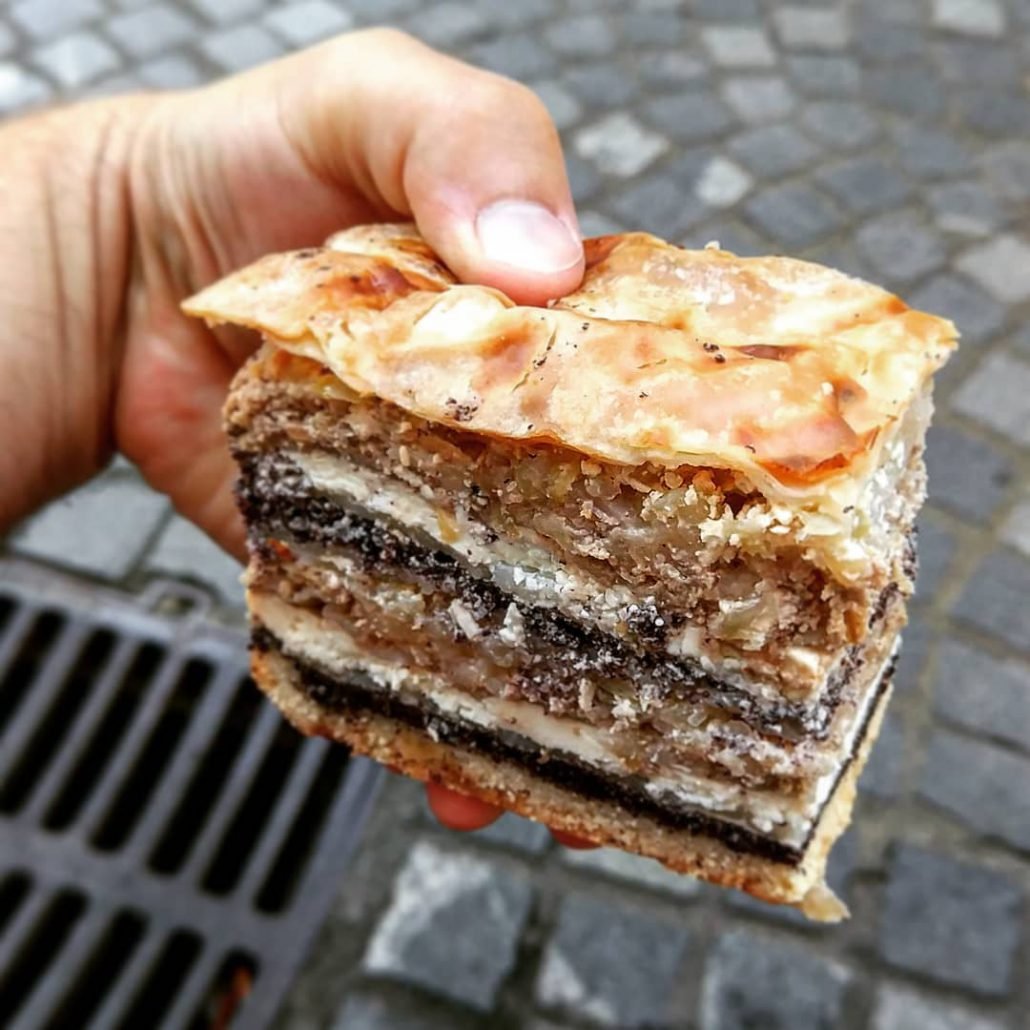
This is a Slovakian Pastry that will absolutely delight your senses. Picture credits: Kacper Grabowski
Try Local Drinks
Alcohol is perhaps one of the most effective means of bringing together people of different backgrounds, creeds and nationalities in Eastern Europe. So here’s one of the fascinating Eastern Europe travel trips – try every local beer, wine and liquor that is accessible to you. Every country in the region has a very proud and elaborate drinking culture. Don’t let it all go to waste by ordering Budweiser or Jack Daniels.
To begin with, Prague has been an elite drinking capital of this region as the Czech Republic consumes more beer per capita than any other country in the world. Most famously known for Pilsner Urquell, Prague has truly capitalized on this asset of theirs by hosting brewery tours, beer tasting, beer bike rides which makes it a mecca for beer drinkers.
Next up is Vodka, another alcoholic drink which has been very popular in this region. Although there has been a centuries old debate as to whether Vodka was invented in Poland or in Russia, entire Eastern Europe along with the Scandinavian and Baltic countries are a part of the Vodka Belt.
The wine culture, however, is more prevalent in central and western Europe but countries like Croatia and Bulgaria still fall under the Wine Belt. Some of the beverages that you should definitely try while in Eastern Europe are Bulgarian Rakia (grape brandy), Serbian Vruca Rakija (plum brandy), Polish Kogel Mogel (eggnog), Polish Krupnik (honey spiced vodka), Austrian and German Schnapps, Hungarian Unicum, Romanian Tuicâ among others.
Taste Unique Varieties of Cheese
East European Cheese is an integral part of the region’s cuisine and the social and cultural identity of the people in the region. While some varieties of the East European cheese are unique to the region such as the Liptauer from Hungary, some other popular cheeses are largely influenced by neighbouring countries. For example, one of the best polish cheese Lubelski is influenced by Mozzarella.
Any traveler visiting this part of the world has got to try their cheese. The choices are many and the flavours varied. Once you have a taste for East European cheese, you will not mind putting on a little holiday weight.
I’m providing a list of 10 best food items containing East European Cheese –
| Bryndzové halušky | One of the national favourites of Slovakia, this is made using one of the most popular East European cheese Byrndza. |
| Cașcaval Pane | A Romanian dish made by stuffing Cașcaval cheese in bread crumbs and then frying it. It is garnished with fried or mash potatoes. |
| Cocoloși | A traditional grilled and barbecued Romanian dish. The balls of mămăligă (porridge made out of yellow maize flour) are filled with one of the East European cheese |
| Pierogi/ varenyky | These are stuffed dumplings popular in Poland, Slovakia, Ukraine and the Czech Republic. Mostly the fillings include potato, sauerkraut, meat, quark cheese, and fruits. |
| Zagorski Štrukli | This is a traditional Croatian dish made using a thin pasta layered with creamy cheese. |
| Međimurska Gibanica | It is a layer cake very popular in Northern Croatia. It has four main contents: nuts, fresh quark cheese, poppy seeds, and apples, along with many additional ingredients. BEWARE: Full of calories but very rich in flavours! |
| Scovardă | It is a type of stuffed pastry crumpled around the filling usually consisting of different types of east European cheese, including urdă. |
| Mažený Sýr | It is a popular Czech and Slovak dish extensively consumed in these countries. Guess what? You will find it everywhere in these countries as it is a common street food. Fried cheese is usually served with tartar sauce and a side salad |
| Túrós Csusza | It is a traditional Hungarian savoury noodle dish. It is made with small home-made noodles or pasta and quark cheese. |
| Vatrushka | It is an East European cheese pastry consumed mostly in Ukraine and Russia. Looks like a ring of dough with quark cheese in the middle. |
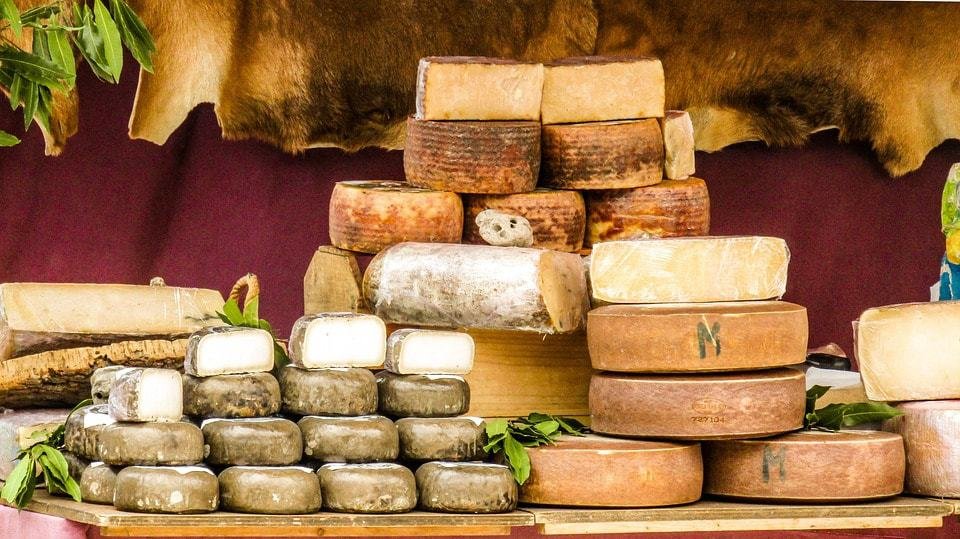
A trip to eastern Europe cannot be deemed complete without trying various varieties of cheese. Picture credits: V Monte

The entire region of eastern Europe is a part of the vodka belt. Picture credits: Toni Cuenca
Keep Yourself Updated about the Political Scenario
Due to its tumultuous history of being involved in the world wars and socialist movements, East European countries have, for the better half of the twentieth and twenty-first century, experienced a wave of political unrest in the form of revolts, demonstrations, boycotts and occasional blockades.
The financial crisis and inflation, that followed the Second World War, in some of the recently turned democracies have aftershocks in the functioning and economic development of these countries even today. Up until the disintegration of the Soviet Union in 1991 and consequently the eastern block, East Europe was not comprised of as many republics as it is today.
Czechoslovakia under the communist regime was split into the Czech Republic and Slovakia after the Velvet Revolution of 1989-90. Yugoslavia was also split up into six nations after the collapse of communism in 1989 namely, Croatia, Macedonia, Bosnia and Herzegovina, Slovenia, Montenegro and Serbia.
In a similar manner, erstwhile Germany, divided into East Germany under USSR and West Germany under the USA was led to its unification in 1990.
The reason why I’m giving you this information is that as a traveler, you should be aware of the political unrest in these nations and plan accordingly.
Visit Again
Eastern Europe seems like a small area to cover in one trip. But if you actually wish to do justice to this place, you’ll be back. For starters, it is not at all easy to visit every hidden treasure and every pretty location at one go.
Moreover, what I have realized after several European trips is that walking to explore locations is one of the most memorable and amazing things to do in Europe because you don’t really know what to expect and you might just stumble upon a beautiful sunrise or an isolated lake. This needs a lot of time which is impossible to cover in one trip.
Therefore, one of the most important Eastern Europe travel tips, I can provide is for you to surely come back here again.
Miscellaneous Eastern Europe Travel Tips
A few other Eastern Europe Travel tips besides the ones mentioned above would be as follows –
| Stay aware | Make sure that you take care of your luggage while on public transport. |
| Carry snacks | Always carry enough light snacks to keep you filled on longer routes. |
| Check water | Ensure the quality of tap water as drinkable or not before consuming. |
| Budget Stays | Accommodate yourself in budget stays if living for more than 2 nights at one place. |
Eastern Europe Travel Tips for Women Backpackers and Solo Travelers
In recent years a lot of solo woman travelers have started to venture out to the eastern side of Europe. Before heading out to this part of the world, it is important that women keep certain Eastern Europe travel tips at the back of their minds.
Avoid traveling at night
The foremost thing to remember among other Eastern Europe travel tips is to absolutely avoid traveling at night. The region is moderately safe. Yet a few women travelers have reported cases of harassment on the streets of some of the regions.
Due to the less population, the areas are largely secluded. Hence it becomes essential not to venture out alone after sunset. If you encounter anti social elements, it will be difficult finding anyone for help in the deserted streets.
Do research on your Accommodation
It is essential that you do a thorough research before accommodating yourself in a hostel. Even though the budget is an important factor for a backpacking trip, safety is even more important.
Therefore, make sure to select a budget stay after carefully reading reviews or finding of certain hostels in travel forums. Until you’re satisfied, do not book a place just because it’s popular.
Carry a Student Id (in case you’re a part of some college or university)
Carrying a student ID is important in Eastern Europe. Just make sure it’s authentic.
With the help of an authentic student ID, you can easily get certain local travel tours at a lesser price. You can even get a few free entries and the drinks also cost less.
Eastern Europe Travel Tips for Saving Money
Budget traveling is an art. Not everybody who travels knows how to save money and still travel properly. It needs to be mentioned here that budget traveling does not imply that you have to wander around on a shoestring budget. It simply means traveling to the same places and having good travel experiences at a more resourceful cost.
Here are a few Eastern Europe travel tips that will help you save money –
Don’t plan your trip around summers
Summers is the peak time for most travelers to visit Eastern Europe. As a result, the places are overcrowded. The staying options are all booked and there are very few locals to be found in the region.
Everything will cost you more if you travel during summer. Instead, travel during the offseason. It will help you connect with the region in a much better way.
Use local transport for traveling between cities
Instead of hiring cabs or booking flights, please use local transport in the form of buses and trains.
Eastern Europe is well connected via both roads as well as trains. Use them, save money and use that money to travel more.
Try Local Internet
If possible, get a local internet data card. Else, the internet will prove to be hugely expensive. Using a local internet card is easy for phones that unlock.
In case your phone is locked then, buy a mobile wifi device. It’ll be a one-time investment on the trip.
This is it from my side as far as Eastern Europe travel tips are concerned. I hope you make use of them while you tour around the region. Eastern Europe is diverse, mystical and warm towards outsiders. Stay compassionate in this part of the world and the love will get back to you.
Happy wayfaring.

